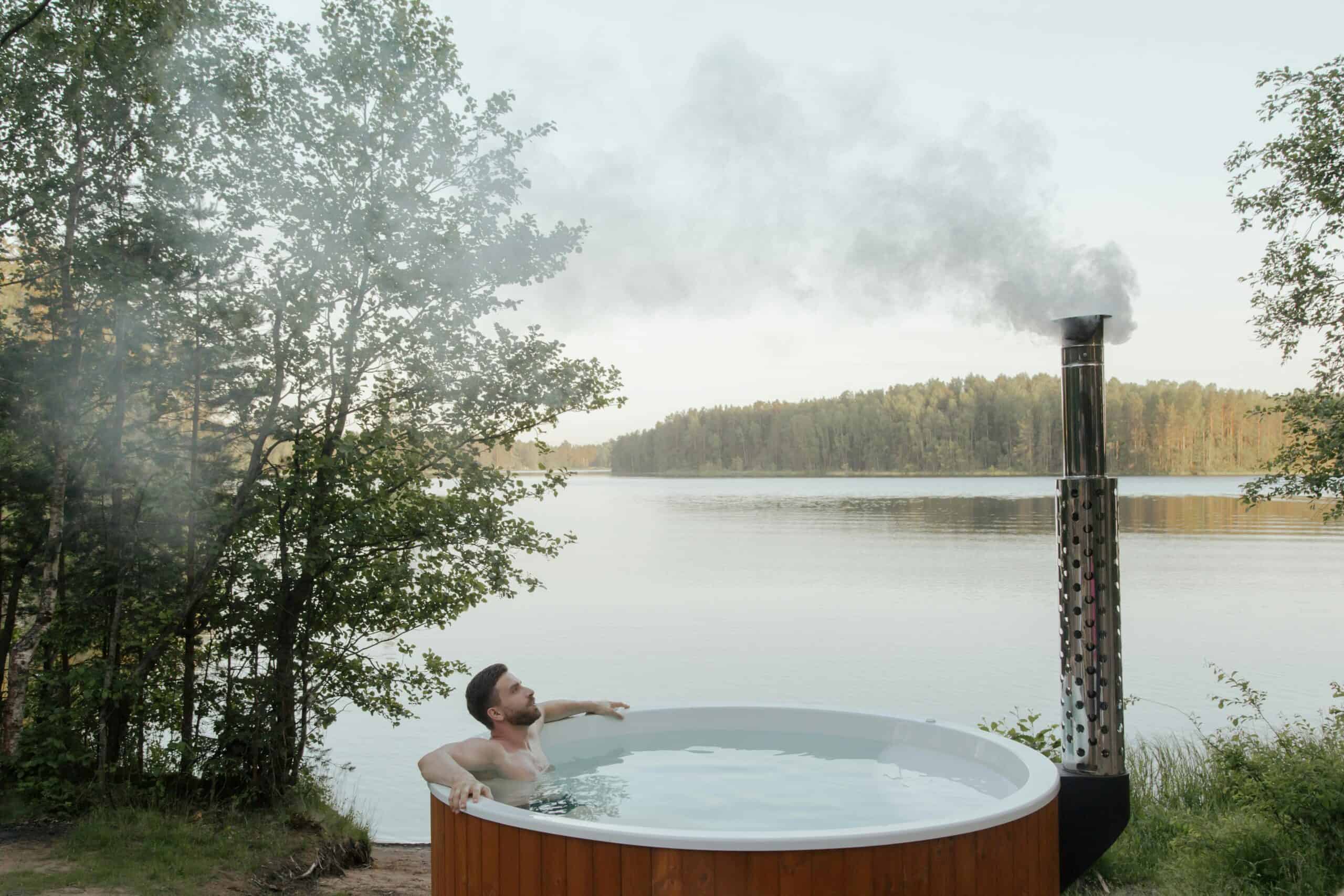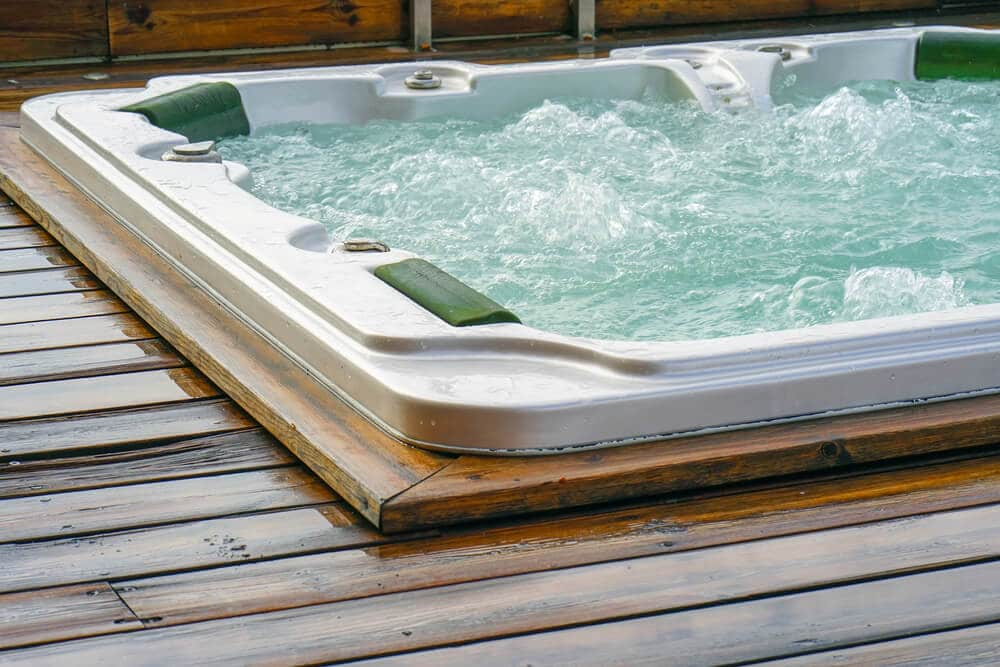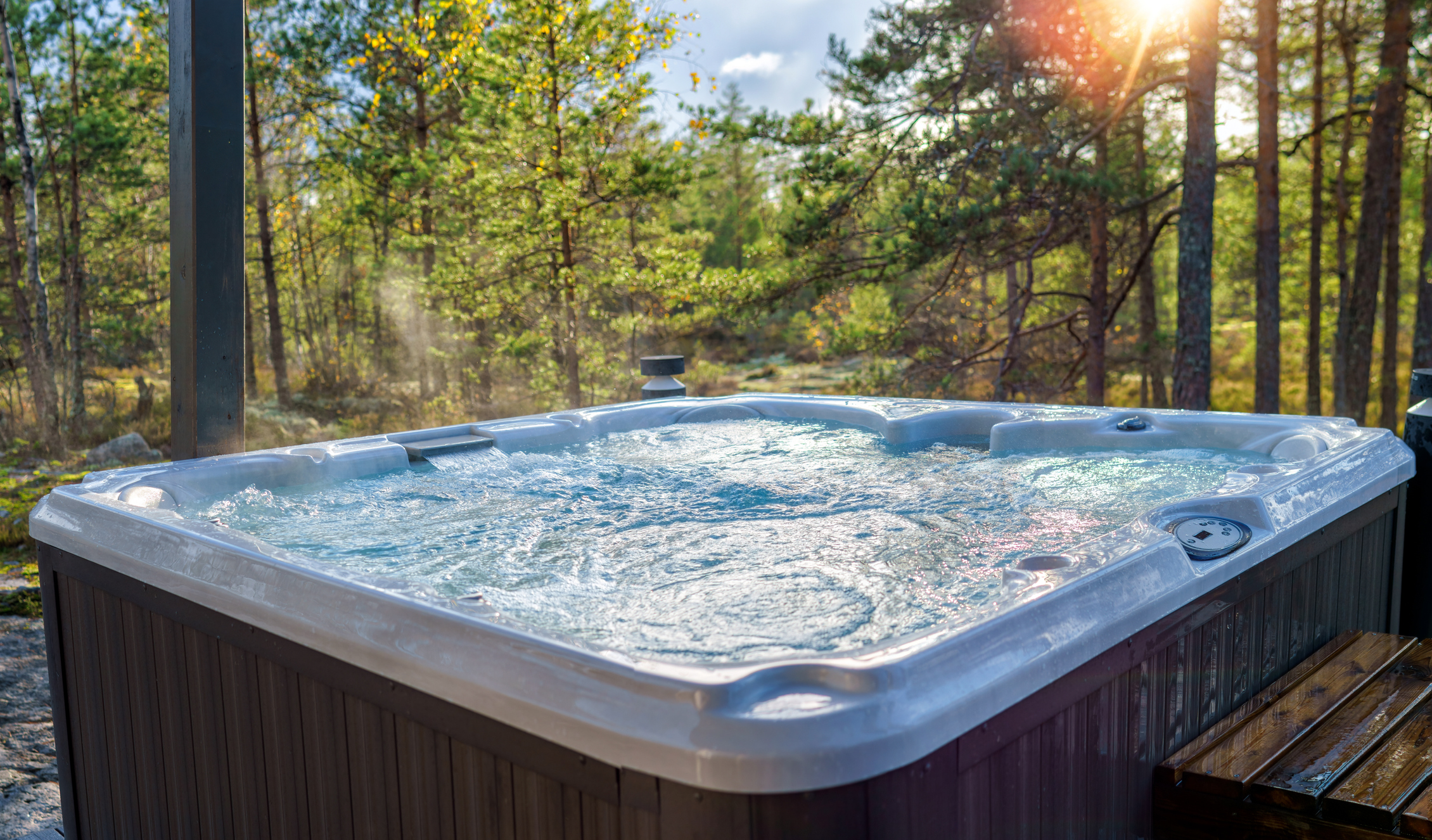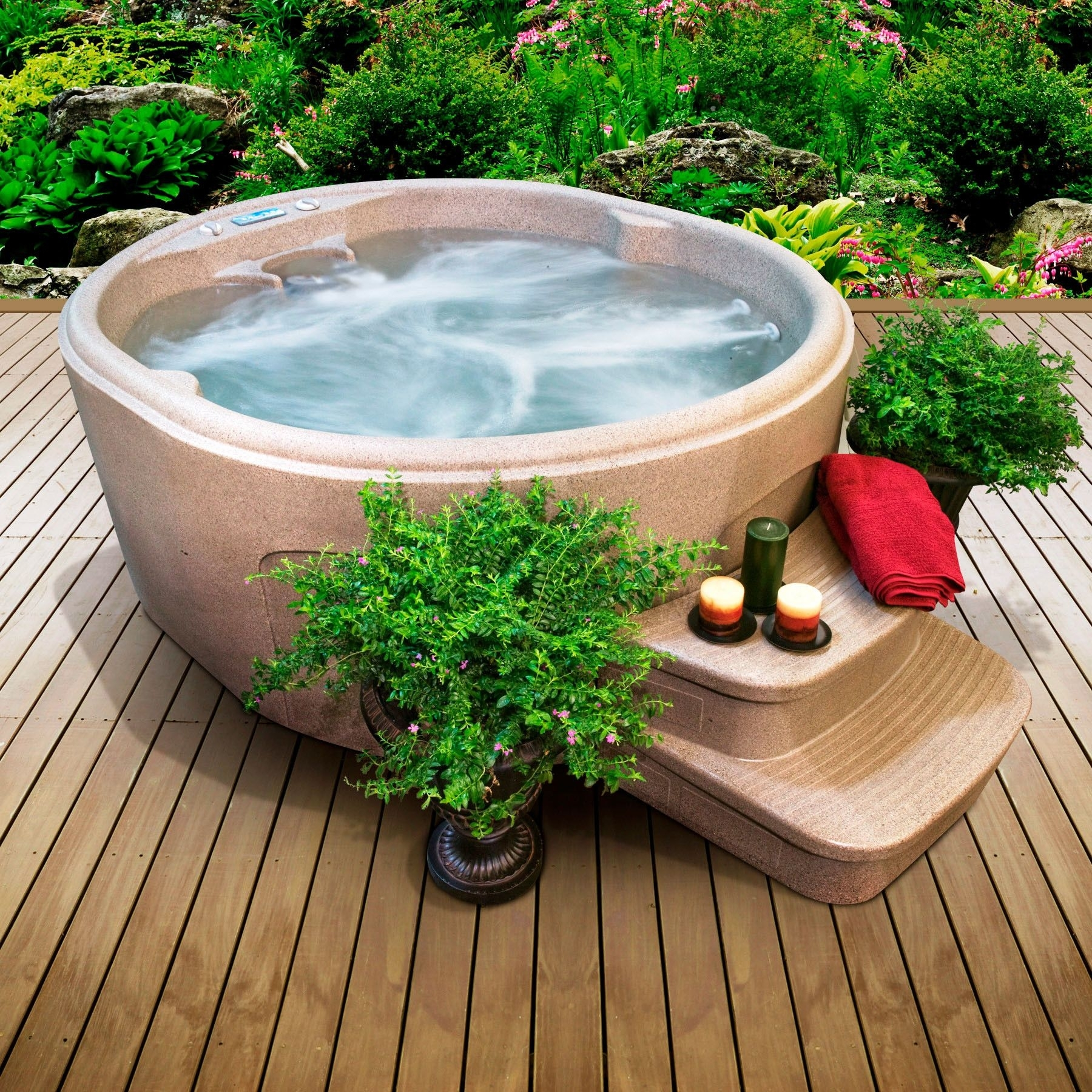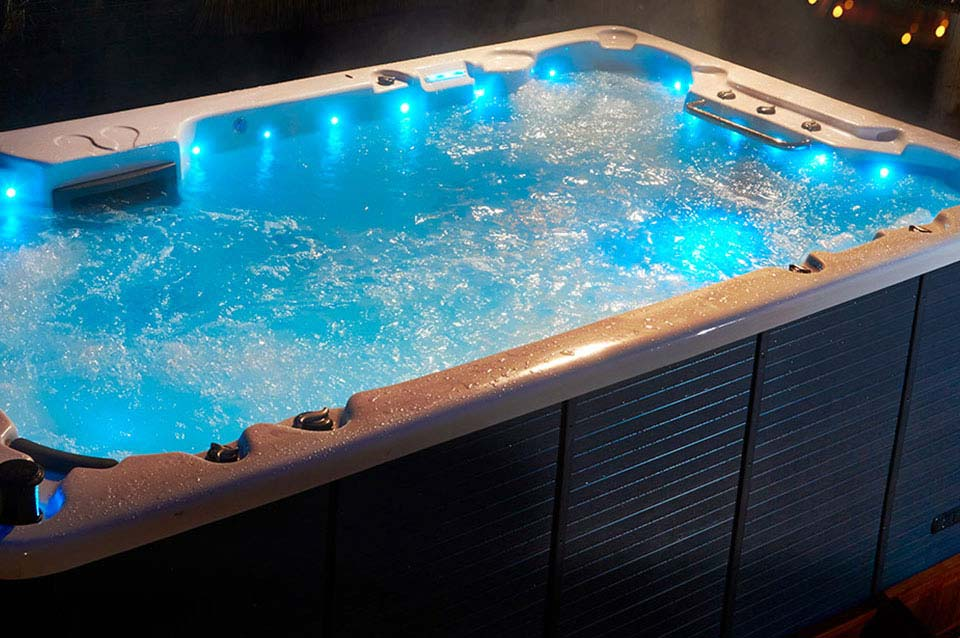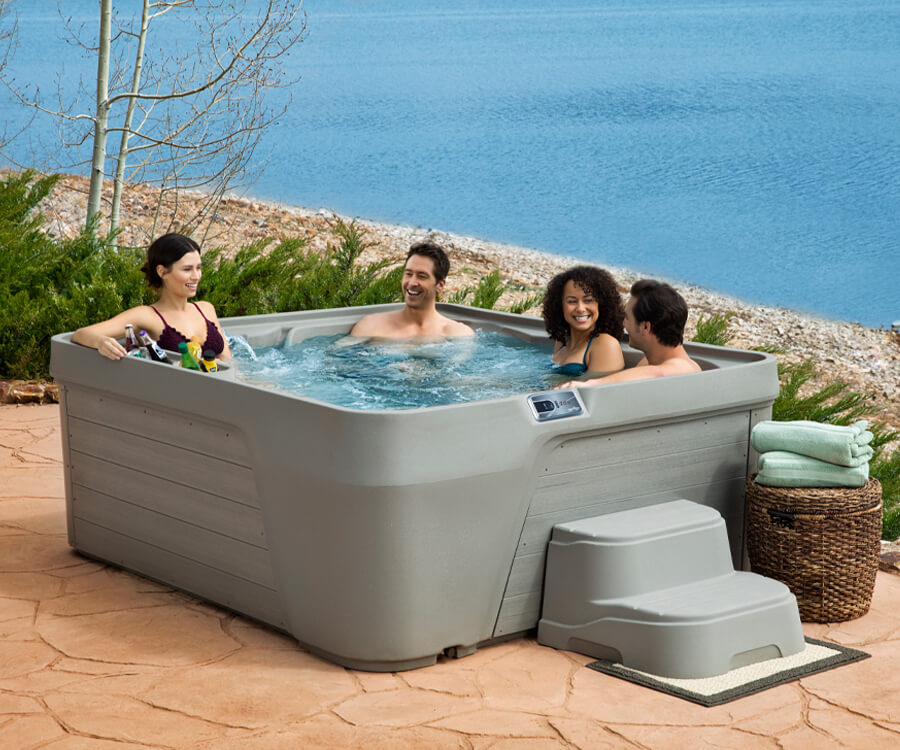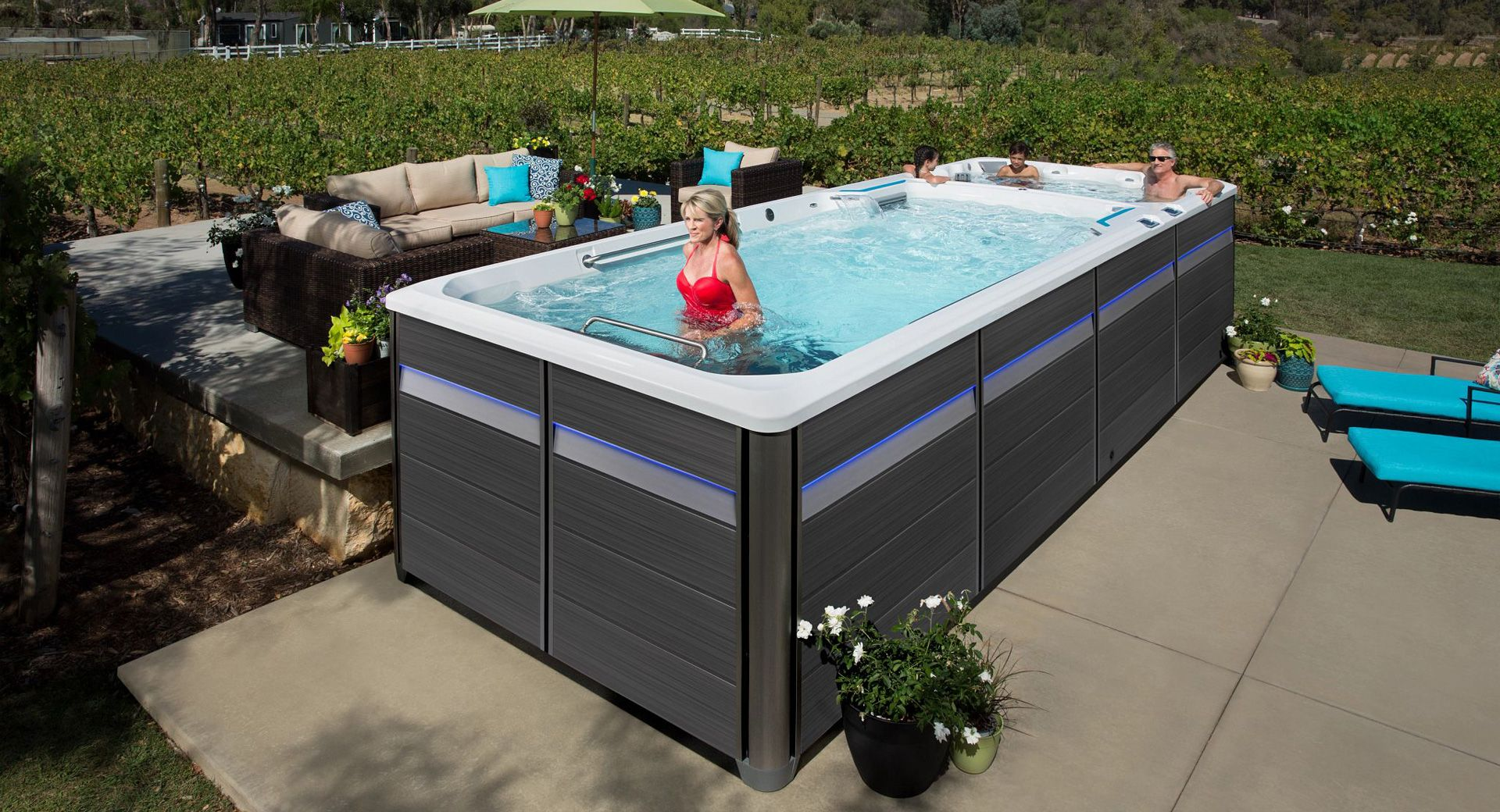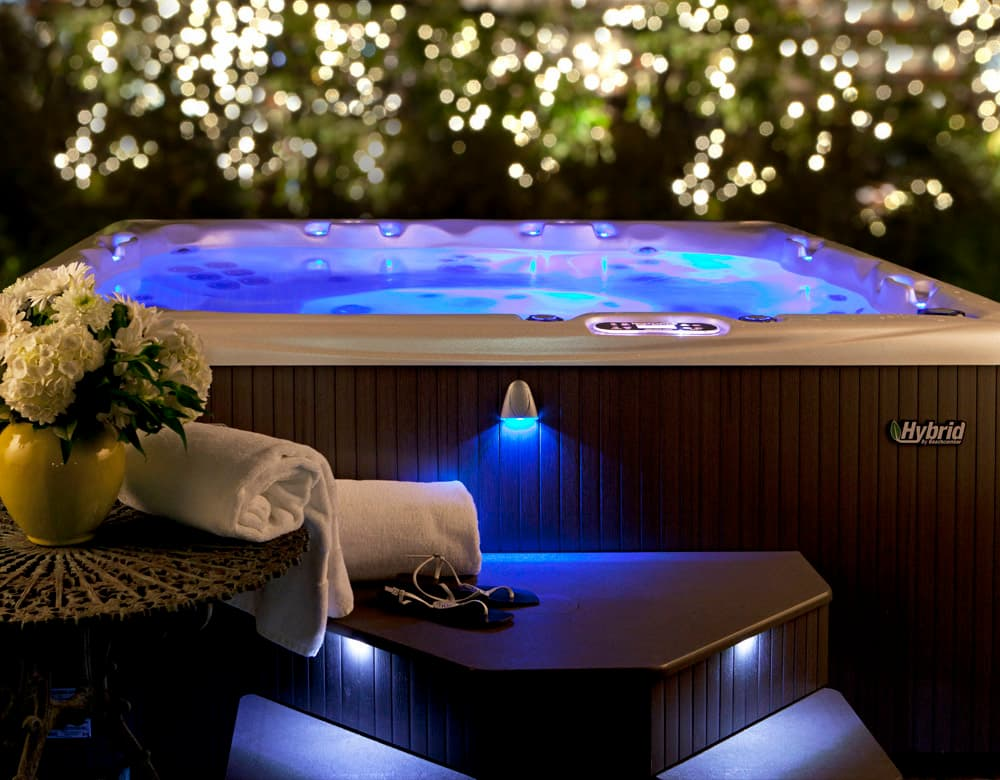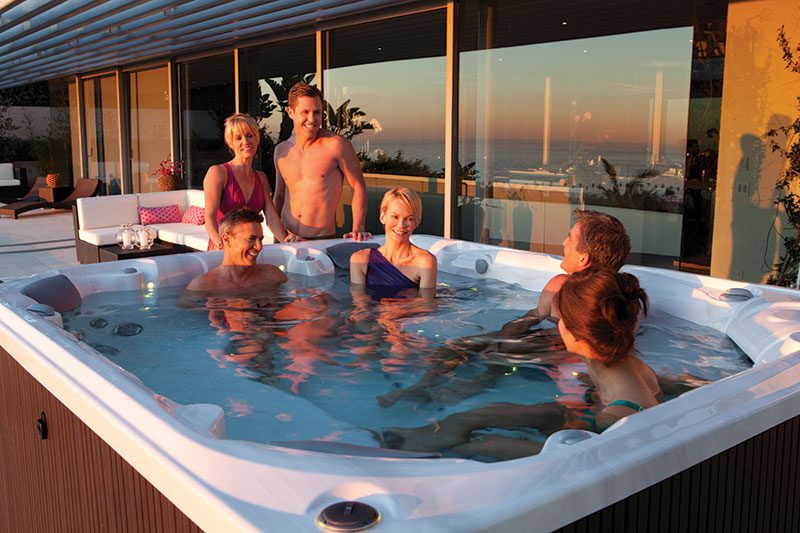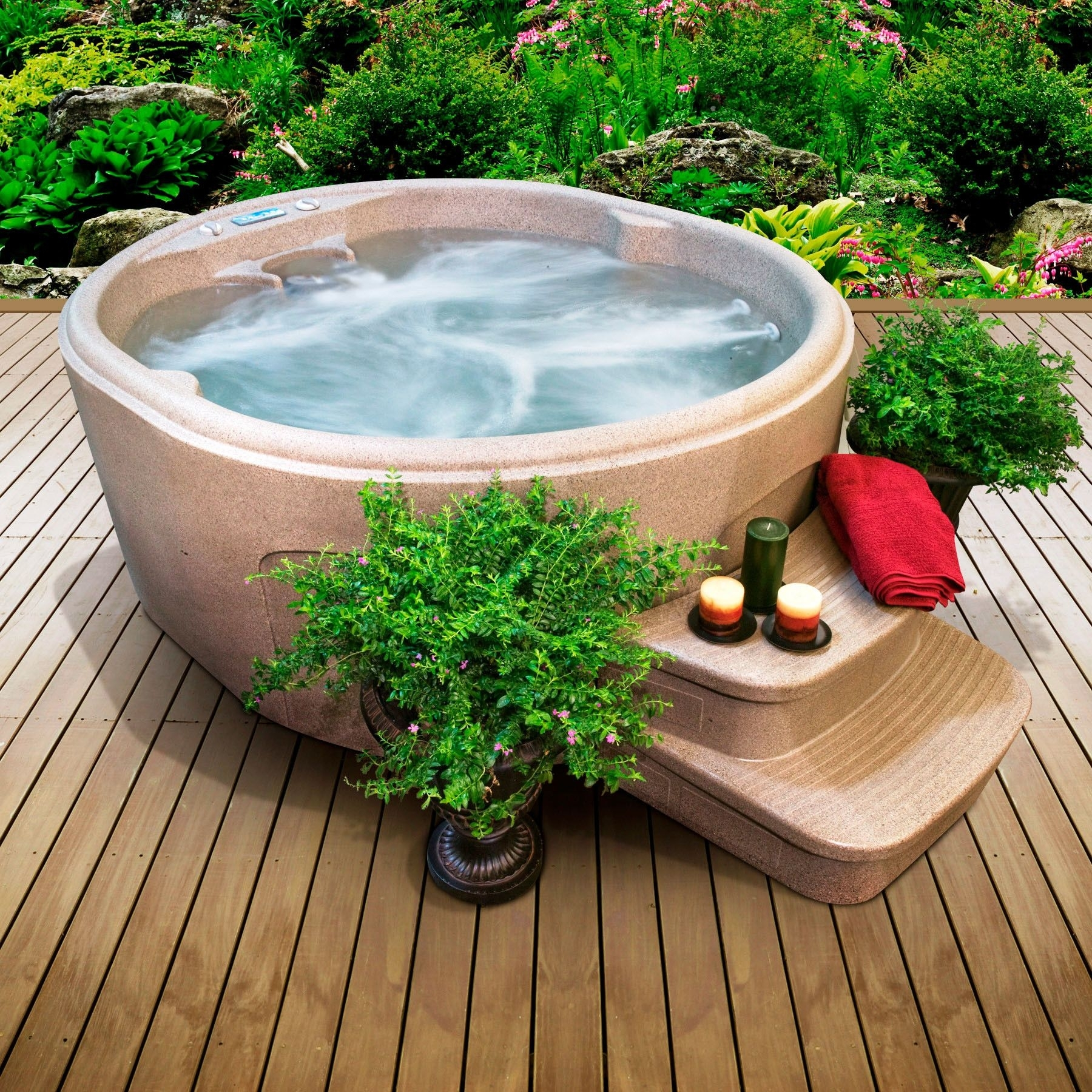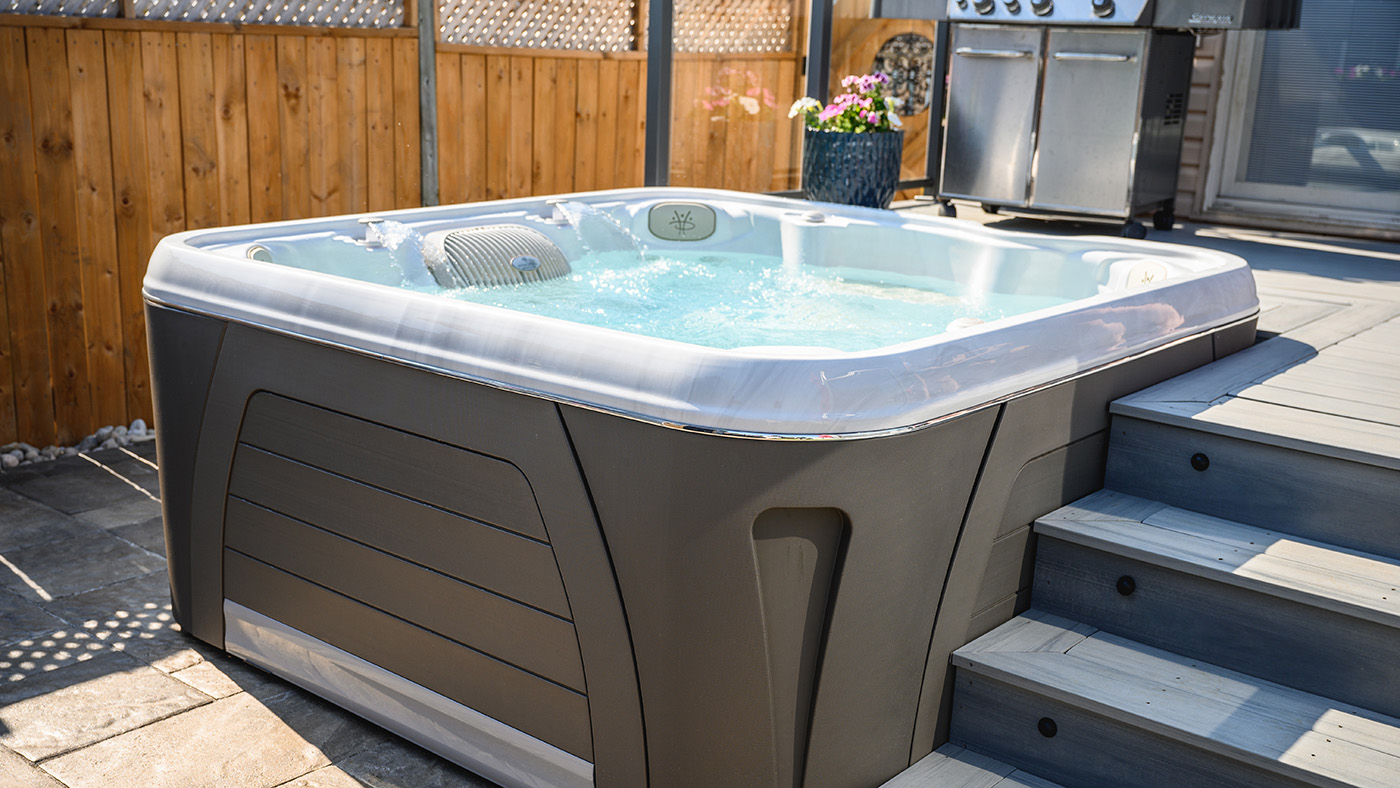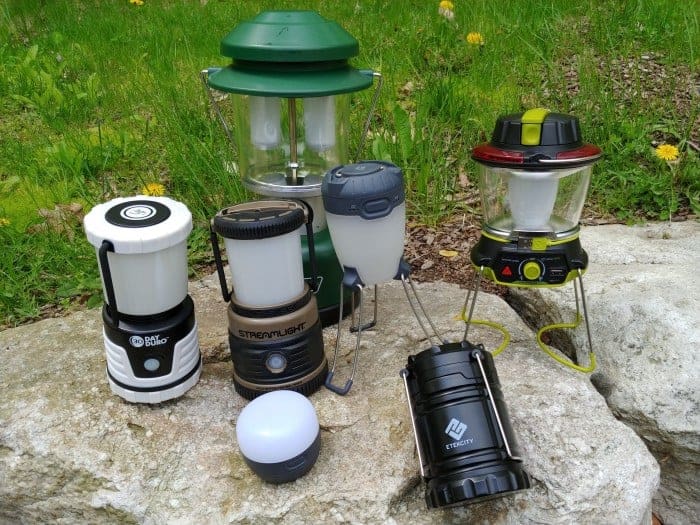With worries about energy use and its effects on the environment, it’s critical to know how much electricity hot tubs use. In this post, we explore the factors that affect hot tub electricity consumption and offer insights to help you make energy-related decisions. Hot tubs are a luxurious and relaxing experience, but have you ever wondered how much electricity they use?
How Much Electricity Does a Hot Tub Use?
The size, temperature settings, insulation, usage patterns, and component efficiency all affect how much electricity a hot tub uses, but generally speaking, the heating element and circulation pump are the two biggest sources of electricity consumption in a hot tub.
A hot tub can consume 1,500 to 7,500 watts, or 1.5 to 7.5 kilowatts (kW) when running. The heating element is typically the largest electricity consumer, accounting for most energy usage. The circulation pump, which keeps the water moving and filters it, also contributes to the overall electricity consumption.
The hot tub’s wattage and operating time must be taken into account when estimating its daily or monthly electricity consumption. For instance, if a hot tub has a 5 kW heating element that runs for 4 hours every day, the daily energy consumption would be 20 kWh (5 kW x 4 hours). The monthly energy consumption would then be calculated by multiplying that by the number of days in a month.
How Much Does it Cost to Run a Hot Tub?
Image Source: firstquarterfinance.com
A hot tub’s total cost depends on a number of variables, such as the energy rates in the area, the hot tub’s size and efficiency, how frequently it is used, the temperature that is preferred, and the length of time spent using it. You must take into account the following while estimating the cost:
- Electricity rate: Determine your area’s electricity cost per kilowatt-hour (kWh). This information can usually be found on your electricity bill.
- Energy consumption: Check the specifications of your hot tub or consult the manufacturer to find the wattage rating of the heating element and the circulation pump. Multiply the total wattage by the hours of use to get the kilowatt-hours (kWh) consumed per day.
- Duration and frequency of use: Determine how many hours per day the hot tub is running and how often it’s used. Multiply the daily kWh consumption by the days you plan to use the hot tub in a month.
- Cost calculation: Multiply the monthly kWh consumed by the electricity rate to calculate the monthly cost of running your hot tub.
For example, if your hot tub consumes 20 kWh daily, your electricity rate is $0.15 per kWh: Monthly cost = 20 kWh/day x 30 days x $0.15/kWh = $90.
Keep in mind that this is only an estimate and that actual power costs may differ based on the factors listed above. For precise estimates tailored to your circumstances, it’s always a good idea to check with your utility provider and review the hot tub’s literature.
Factors Affecting Hot Tub’s Electric Consumption
Image Source: homesandgardens.com
Despite providing a calming and restorative experience, hot tubs need a lot of electricity to be heated and functional. You may optimize energy use and reduce costs by being aware of the various elements that influence hot tub energy use. Let’s look at the primary determinants of hot tub energy consumption:
1. Size and Insulation
Size directly affects energy consumption because larger hot tubs require more power to heat and maintain the water temperature. Insulation is another crucial component of energy efficiency; hot tubs with enough insulation retain heat better, reducing heat loss and the need for continuous heating.
2. Water Temperature
The desired water temperature directly correlates with energy usage. Higher temperatures require more energy to achieve and maintain, leading to increased electricity consumption. Also, finding a comfortable temperature that balances relaxation and energy efficiency can help minimize energy use.
3. Usage Frequency and Duration
The frequency and duration of hot tub use significantly affect energy consumption. Regular and prolonged use will require more electricity to keep the water at the desired temperature. If you use your hot tub infrequently, it may be more energy-efficient to lower the temperature or turn off the heating when not in use.
4. Heating System
Your hot tub’s heating system type may have an impact on its energy efficiency. Electric hot tub heaters provide precise temperature control and are commonly used. However, compared to other heating solutions like gas or propane heaters, it consumes more electricity. In areas where gas prices are lower, gas or propane heaters may be more cost-effective, but they would require more ventilation and infrastructure.
5. Ambient Temperature
The external temperature plays a role in hot tub energy consumption, especially in colder climates. Hot tubs in colder environments lose heat more rapidly and require additional energy to compensate for heat loss. Wind exposure and the presence of a windbreak can also affect energy efficiency.
6. Maintenance and Water Care
Proper hot tub maintenance is vital for optimal energy efficiency. Regularly cleaning and replacing filters, ensuring optimum water chemistry, and completing basic maintenance tasks will help your hot tub work smoothly. Ineffective water circulation or clogged filters can put stress on the heating system and raise energy usage.
7. Additional Features
Hot tubs often have various features and accessories that can impact energy usage. Features like jets, lights, and sound systems require extra electricity. Consider the energy efficiency of these features and their impact on your overall usage.
Types of Hot Tubs and the Electricity They Use
Hot tubs are a common outdoor space addition because they offer a tranquil haven for rest and renewal. Making educated decisions on electricity use, however, requires knowledge of the energy needs of various hot tub varieties. Typical hot tub varieties and the electricity they normally consume are as follows:
1. Plug and Play Hot Tubs
Image Source: foter.com
Often referred to as 110-volt hot tubs, plug-and-play hot tubs are made to be portable and simple to install. No extra wiring is required to connect these hot tubs to a regular electrical outlet. Compared to higher voltage types, plug-and-play hot tubs typically have lower heating capacity, despite their convenience. Usually, they use between 1,000 and 1,500 watts to heat. On the other hand, their insulating quality and lower size can help with energy efficiency.
2. Acrylic or Fiberglass Hot Tubs
Image Source: plaskolite.com
Acrylic or fiberglass hot tubs are the most common type of permanent hot tubs in residential settings. They offer a wide range of sizes and designs. The electricity usage of these hot tubs varies depending on factors such as insulation quality, water temperature settings, and usage frequency. On average, these models consume between 1,500 and 7,000 watts for heating. The larger the tub and the higher the desired temperature, the more electricity it will require to maintain the water’s warmth.
3. Inflatable or Portable Hot Tubs
Image Source: spadepotutah.com
Inflatable or portable hot tubs have gained popularity due to their affordability and easy installation. These models typically have a lower initial cost compared to permanent hot tubs. Regarding energy consumption, they generally range from 1,000 to 1,500 watts for heating. However, it’s important to note that their insulation might not be as effective as that of permanent hot tubs, resulting in slightly higher energy usage.
4. Swim Spa
Image Source: endlesspools.com
The swim spa combines the advantages of a swimming pool and a hot tub. They offer a bigger area for rest and exercise. Swim spas usually use more electricity than regular hot tubs because of their larger size and capacity to maintain a constant temperature. Depending on its size and preferred temperature, swim spas can use anywhere from 4,000 to 15,000 watts of electricity.
5. Hybrid Hot Tubs
Image Source: canadianhomeleisure.ca
Hybrid hot tubs offer flexibility in terms of electrical requirements. They can operate using either a 120-volt or 240-volt electrical connection. This energy-efficient model often comes with a convertible power system that allows you to switch between the two voltage options based on your needs.
In addition, hybrid hot tubs combine multiple heating methods to maximize energy efficiency. These energy-efficient hot tubs often integrate electric heating elements with alternative heat sources such as gas or solar power. Using different energy sources, hybrid hot tubs can significantly reduce electricity consumption while maintaining optimal water temperature.
6. Saltwater Hot Tubs
Image Source: hotspring.com
As an alternative to conventional chlorine-based systems, saltwater hot tubs have grown in popularity. Saltwater chlorination systems, which produce chlorine from dissolved salt in the water, are used in these hot tubs. Similar to acrylic or fiberglass hot tubs, saltwater hot tubs use between 1,500 and 7,000 watts of energy to heat. The fundamental distinction is in the upkeep of the saltwater chlorination system, which produces chlorine by means of a tiny electric current.
Frequently Asked Questions on How Much Electricity Does a Hot Tub Use
Image Source: aquarestspas.com
1. Is it Cheaper to Keep a Hot Tub Running?
Insulation, energy prices, usage patterns, and hot tub efficiency all affect how cost-effective it is to leave a hot tub running constantly as opposed to shutting it off when not in use. Although it uses more energy, the continuous operation guarantees a constant water temperature and does away with preheating. Although it needs to be preheated and may be annoying, turning it off saves energy, especially if consumption is rare. Heat retention is aided by proper insulation.
2. How can I minimize the energy consumption of my hot tub?
Minimizing energy consumption in your hot tub involves improving insulation, using a high-quality cover, optimizing temperature settings, utilizing programmable timers, considering energy-saving modes, and performing regular maintenance. By implementing these practices, you can reduce energy usage, decrease costs, and promote energy efficiency in your hot tub.
3. How much electricity does a hot tub use a day?
The electricity consumption of a hot tub per day varies depending on several factors. On average, a hot tub can use anywhere from 5 to 15 kilowatt-hours (kWh) of electricity daily. This estimate considers the heater, pumps, jets, and other components running intermittently to maintain the water temperature and provide circulation.
However, the actual usage can be lower or higher depending on factors like the desired water temperature, insulation quality, usage duration, and efficiency of the hot tub.
4. How much will a hot tub increase my electric bill?
The size, insulation, temperature settings, frequency of use, and local energy prices of your hot tub all affect how much your electric bill will climb. Hot tubs can raise monthly electricity costs by $20 to $50 on average. Larger hot tubs or ones with less insulation, however, can use more energy and cost more money.
Conclusion on How Much Energy Does a Hot Tub Use
Image Source: orleanshottubs.com
Numerous factors, such as the hot tub’s size and kind, frequency of usage, temperature settings, insulation, and overall energy efficiency, affect how much electricity it consumes. In order to decrease energy use and ultimately save costs, hot tub owners should take into account energy-efficient features like programmable timers and well-insulated covers. Adopting cutting-edge energy-saving techniques, such keeping the water at the right temperature and performing routine maintenance, can also maximize energy use without sacrificing a hot tub’s ability to provide relaxation and enjoyment.
